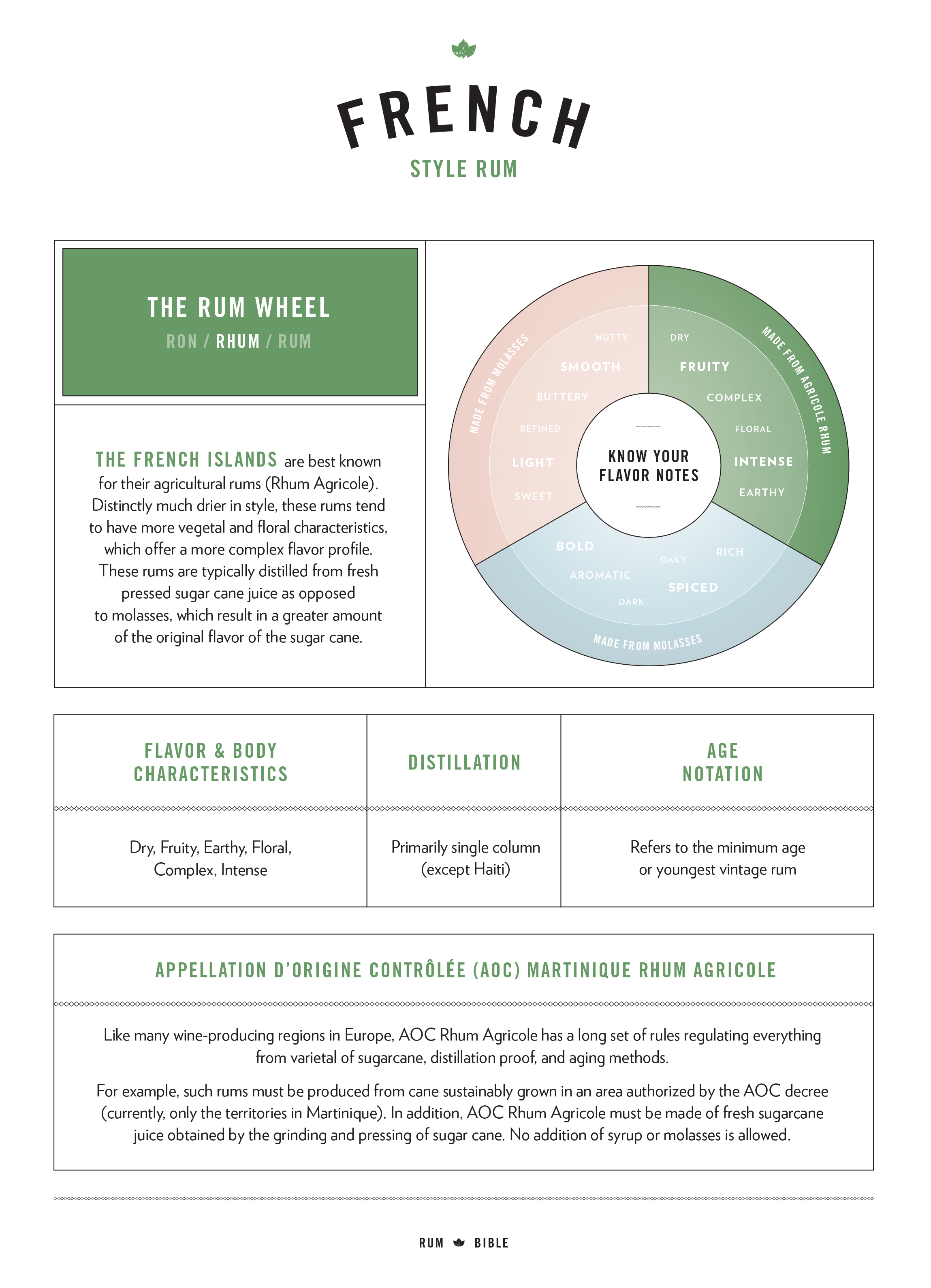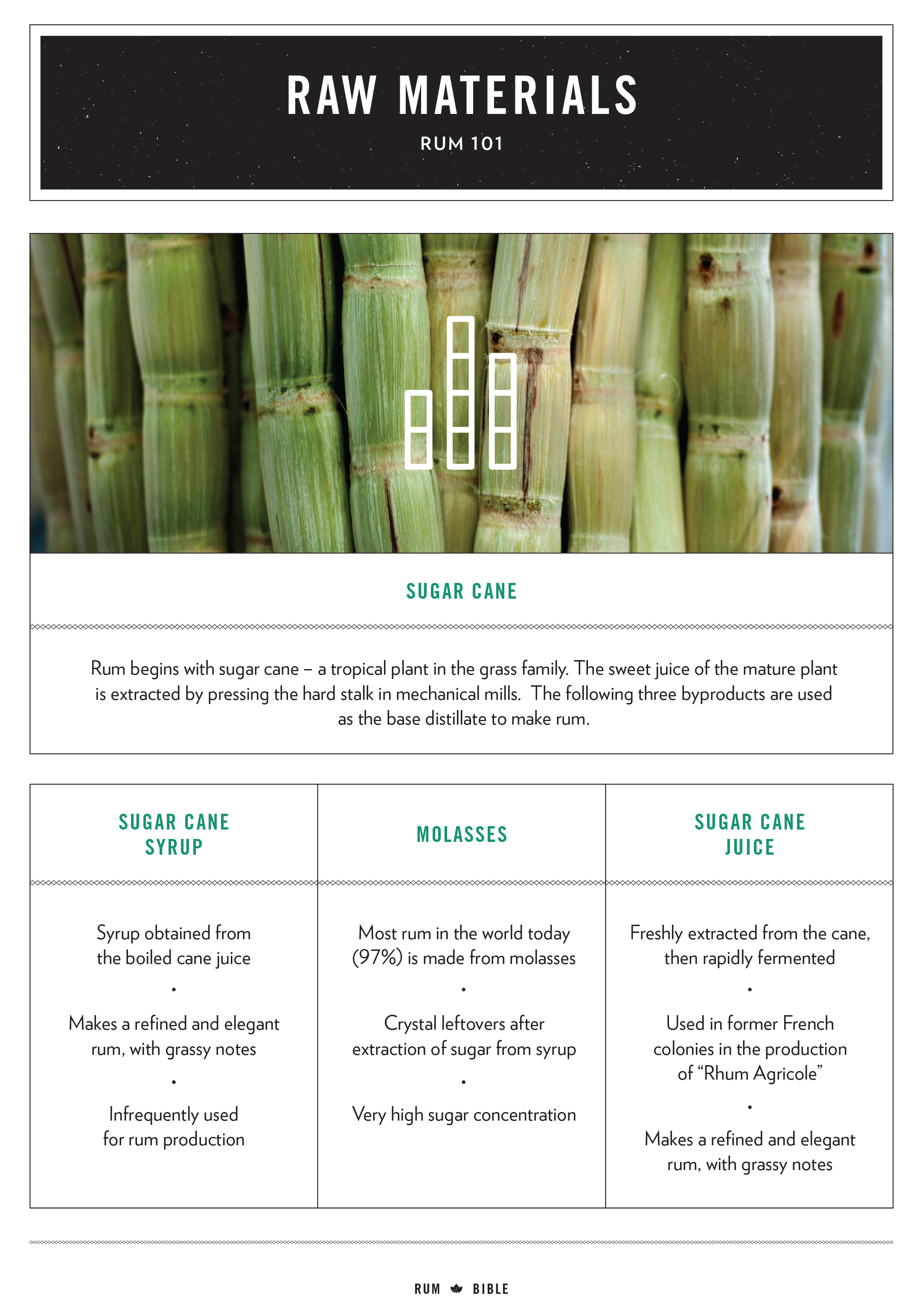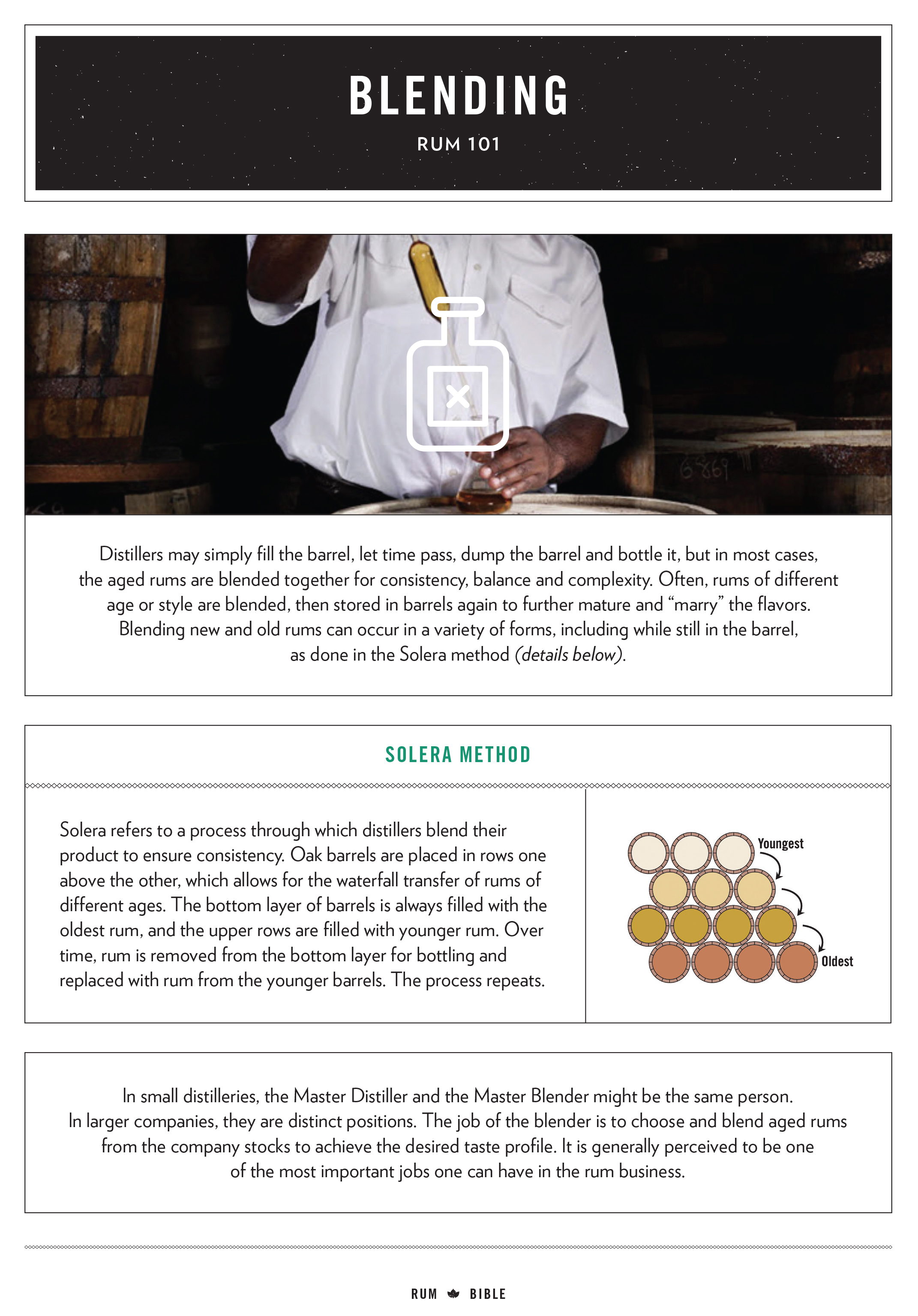Rum 101
This page contains the written word on rum.
Rum is a journey – not a destination. Whether you’re a well-versed traveler or are just starting along the way, rum is universally pleasing to all palates. We’re here to help guide you through the process of choosing rum. Consider us your personal Rum Expert.
![]()
With more than 100 rums from around the world in stock, we focus on three main styles: Spanish, French and English. Each style has a specific method in which its rums are distilled. For example, Spanish-style rums are typically distilled in column stills while English-style rums are mostly distilled in pot stills. But we’ll get into that more later.
Producing any style of rum always starts with sugar cane. The juice of the plant is extracted, and one of three byproducts is used as the base distillate in rum production: Sugar cane syrup, molasses or sugar cane juice. Most rum today – 97 percent – is made from molasses.
The outer ring of the Rum Wheel highlights the byproduct used as the base distillate for each style of rum, and the inner ring guides you through the main flavor notes of each rum so you can choose a rum that is in line with your flavor preferences.
![]()
Styles of Rum
Click on the images below to learn more about the Spanish, French and English styles of rum.
![]()
Click on any image below to enlarge its size.










